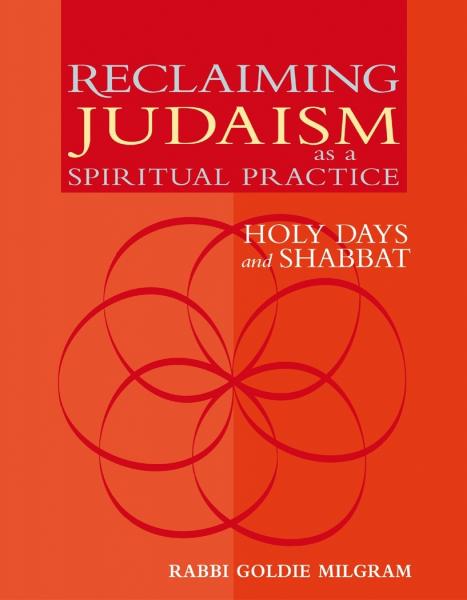
The Passover seder is an opera of questions, a careful seder, order, of Gestalt-like spiritual experiences, which, when undertaken with a richness of contemplation and discussion bring home the core metaphors of Judaism as a spiritual practice--that also apply so powerfully to being human. Around our tables may be those whose inner-lives are dangerously depressed. It is very important include sharing wisdom you have learned about how to move through times of such oppression and depression into joy for living. The seder ideally includes all possible from the "minyan of our lives"-- those dear to us, whom they/we faithfully care and show up for in times of both need and celebration.
By exploring questions both given and that we raise ourselves, we also become the research and development teams of the future. Especially when we focus upon what it takes to shift from oppression to liberation in the context of the new paradigm of our times --consideration for advancing the equality and wellbeing for all that lives.
Here below, set out in the traditional seder order, are points for spiritual support, awareness and discussion.
Kaddeish – Chanting the Kiddush. Raise the brimming Kiddush-- “holiness” cup of red wine, brimming over with the gift of life, freedom and joy it symbolizes, and the abundance mind-set that it takes to commit to leave our Mitzrayim--"Egypt times--narrow places" of attachment in anticipation of a better future.
Urkhatz – Washing your hands. This hand washing is a moment of ritual purification. Water symbolizes chessed, experiencing and tonight trying on being overflowing loving-kindness, become a high priest for the seder. Consider: Lifting up your hands and intentions to expand the lovingkindness in this world.
Karpas – Eating a bit of green vegetable dipped in salt water or vinegar. Symbolizing tears, sprit and rebirth of the mixed multitude of enslaved nations who left Egypt to become, at Sinai, the Israelites, having left, Mitzvrayim--Egylpt, the narrow place to bond and be re-shaped into free people. Consider recalling and sharing the green shoots of life-li-ness that arise after our lives’ and societal periods of “body/mind/spirit enslavements.”
Yakhatz – Breaking the middle matzah. Half will be hidden; this is the bread of unawareness, within ourselves and our children. What might it take to overturn (hafokh) this year’s afflictions? Even if not today, the meal can’t be finished without taking a taste and chewing on the ingredients of redemption.
Maggid – Telling the Exodus story. Become the story as it is being told. Feel yourself as Moses appearing before Pharaoh; taste the bitterness of slavery. Know the opportunity before you. Trust, flee! You won’t die, cross the sea. Rejoice! Dance! Feel the current of pure freedom within you!
Rachtzah – Washing the hands with gratitude before eating and with blessing.“I lift up my hands in thanks for Your blessing “-song verse by Rabbi Judy Kummer)
Motzi – Blessing before eating a meal with a bread substance in it and liftinf up the plate of the three matzot. Consider: “May this bread renew my connection to the process of creating life from dust (mae afar kumi). I bless the creative process of nourishment coaxed with labor and creativity from what once was simply earth.”
Matzah – Blessing over the three sheets of unleavened bread, eating of the matzah. A reminder of the double portion that came on Shabbat in the wilderness after hurrying toward freedom. Consider; “When I have nothing left to draw on, matzah teaches me to trust and go on.”
Maror - Blessing over bitter herbs, eating some on matzah. Bitter lettuce heart or horseradish is eaten; just enough to raise the memory of bitter times. Bless the Source of this pungent reminder that life has ebbs and flows. Consider: “May I learn enough not to pass the way of my life’s bitterness lessons yet again.
Korech – A matzah sandwich made with bitter herbs and the sweet apple/date/nut/wine mixture called charoset. Reclining to one side, not enslaved to time nor any pharaoh…pause, taste the spice of life. Consider: “May I learn equanimity to take life as it comes, to bless, taste and embrace the bitter with the sweet.”
Shulchan Aruch – Festival table arrayed with the delicious Passover meal – let’s eat. It is a mitzvah to contribute to the meal with foods created by your own hands – the seder meal is a holy effort to both give and receive. Consider: “May the love added to this food during its preparation fill me so I am pregnant with celebration, bursting with passion for freedom. May all who hunger come and eat.”
Tzafun – Finding and eating, as a blessing for a good future, a bit of the matzah half called from the Afikomen. Consider, concerning the next generations: “We won’t have a Jewish future without you.”
Barech – Experiencing gratitude and blessing for the meal, the Source of Life, and those who made it. Consider; “You are the Source of Life for all that is and Your Blessing flows through us.” [by Rabbi Shefa Gold and Hazzan Jack Kessler interpreted from Talmud Brachot 40b]
Hallel – Psalms and songs of celebration. The Kabbalists call these psalms “vessels of grace.” Consider: What has happened for you that was unearned and good in your life?
Nirtzach – Concluding the seder. – May we, whose souls are here to experience and grow in wisdom with the gift of life, may we add goodness to this world through living mitzvah-centered lives, and may we find healthy ways to help secure, experience and model the light of peace in Jerusalem—for all.

Learn more about Jewish holy days
in Reclaiming Judaism as a Spiritual Practice:
Holy Days and Shabbat
by
Rabbi Goldie Milgram